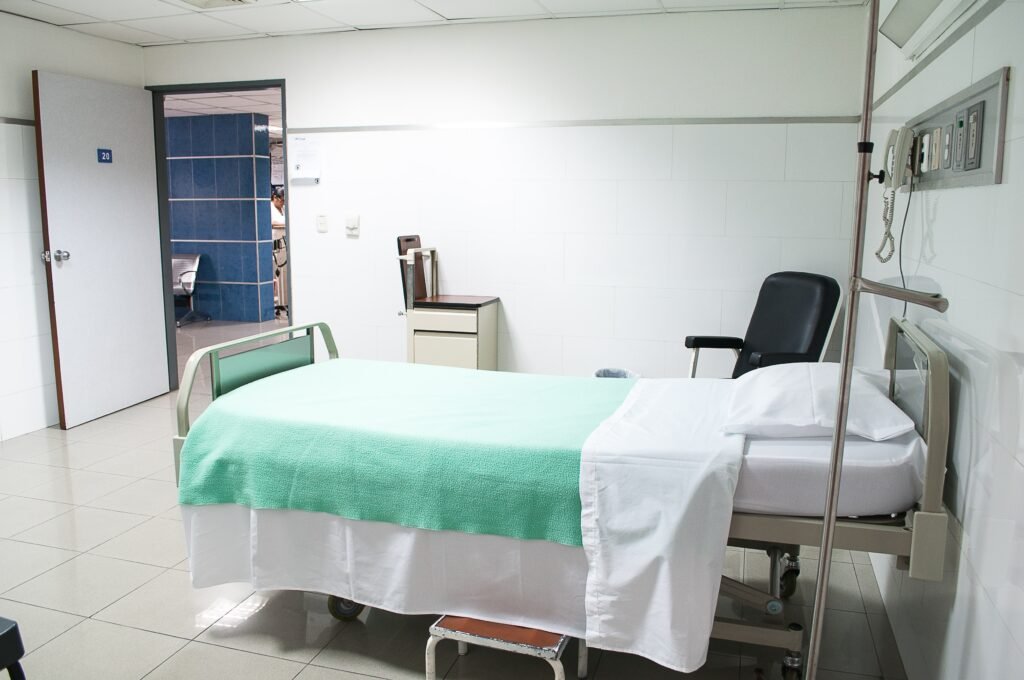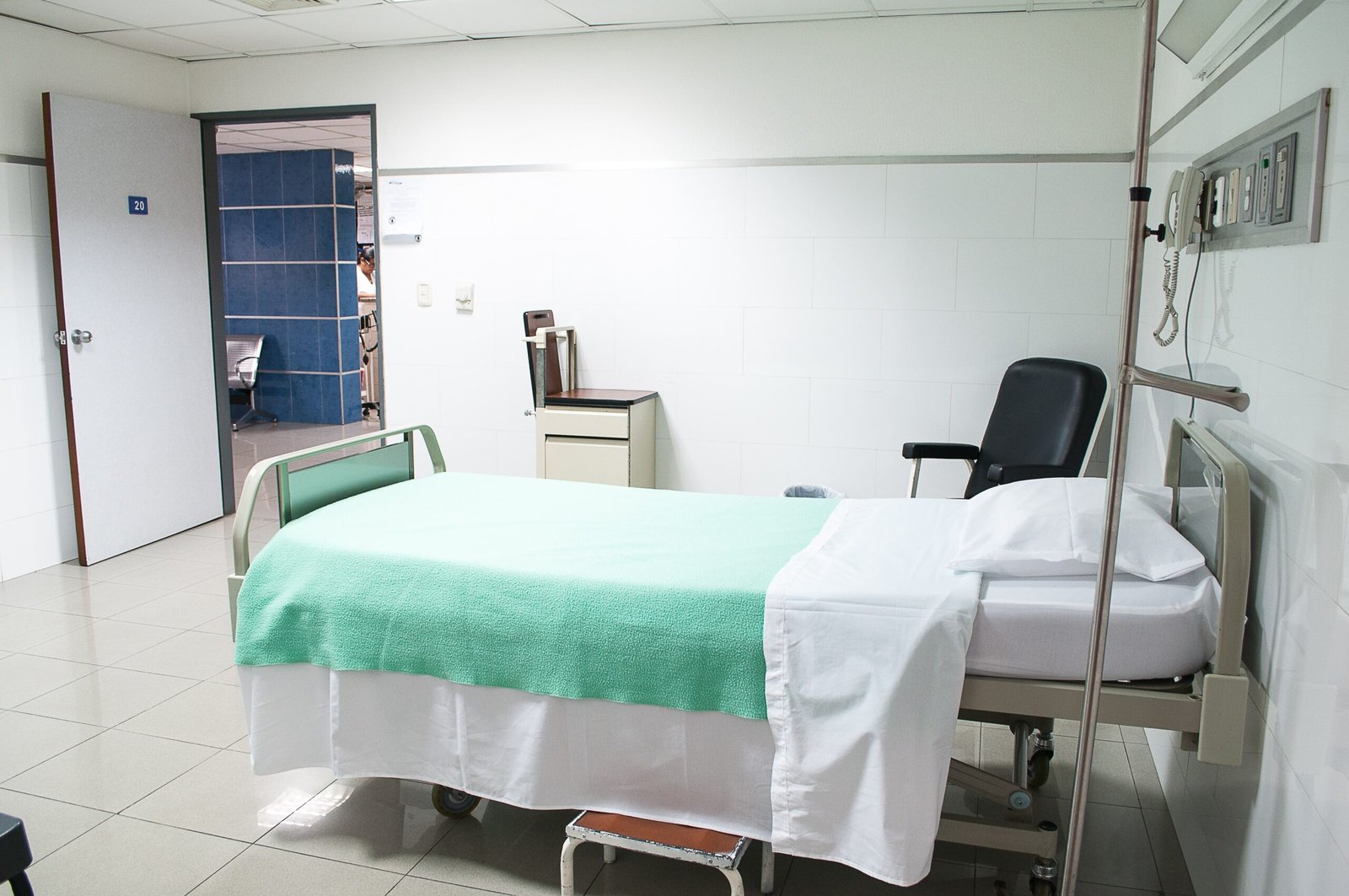Have you ever wondered what health inspectors look for during their inspections? When it comes to ensuring the safety and cleanliness of establishments, health inspectors have a specific point of focus. In this article, we will explore the key areas that inspectors prioritize during health inspections, shedding light on the essential aspects that need attention to maintain high standards of hygiene and safety. From food handling practices to sanitation measures, understanding these points of focus can help businesses prepare and pass health inspections with flying colors.

Read More Information at Health Joy
Overall Sanitation and Cleanliness
Cleanliness of floors, walls, and surfaces
Maintaining a clean and hygienic environment is essential to ensure the safety and well-being of everyone who enters your establishment. During a health inspection, one of the key areas of emphasis is the cleanliness of floors, walls, and surfaces. Regular sweeping, mopping, and disinfection of these areas are critical to prevent the accumulation of dirt, bacteria, and other contaminants. It is important to pay attention to high-traffic areas, such as entrances, dining areas, and restrooms, as they require more frequent cleaning. By keeping your floors, walls, and surfaces clean, you can create a welcoming and safe environment for your customers and employees.
Proper waste disposal
Proper waste disposal is another crucial aspect inspected during health inspections. Effective waste management not only helps keep your establishment clean but also prevents the proliferation of pests and the spread of harmful bacteria. It is important to have designated waste disposal areas that are well-maintained and equipped with appropriate containers, such as garbage bins and recycling bins, depending on the types of waste generated. Regular and proper disposal of waste, including the implementation of recycling initiatives if applicable, can significantly contribute to maintaining a safe and environmentally friendly establishment.
Sanitation of food preparation areas
Food preparation areas are sensitive zones where good sanitation practices are imperative to prevent foodborne illnesses. Health inspections will focus on the cleanliness and sanitation of these areas, as they directly impact the safety of the food you serve. It is essential to have a well-designed and organized layout that separates raw and cooked food to prevent cross-contamination. Regular cleaning and sanitizing of food preparation surfaces, cutting boards, utensils, and equipment should be conducted to eliminate any potential health hazards. Ensuring proper sanitation practices in food preparation areas is crucial for the overall safety of your customers and the success of your establishment.
Food Safety
Temperature control for food storage and preparation
Temperature control is a critical component of food safety, as it directly impacts the growth of bacteria and other pathogens. During health inspections, thorough checks are conducted to assess the proper temperature control measures in place for both food storage and food preparation. Refrigerators and freezers should be maintained at the appropriate temperatures to prevent the growth of harmful bacteria that can cause foodborne illnesses. Similarly, during food preparation, it is crucial to follow proper temperature guidelines for cooking and heating to ensure that the food reaches safe internal temperatures. By implementing proper temperature control measures, you can significantly reduce the risk of food contamination and protect the health of your customers.
Proper handling and storage of raw and cooked foods
The handling and storage of raw and cooked foods are key factors in preventing cross-contamination and maintaining food safety. Health inspections pay close attention to these practices to ensure that you are following proper procedures. It is essential to store raw and cooked foods separately to prevent the transfer of harmful bacteria from raw to cooked items. Raw meats, seafood, and poultry should be stored in designated areas at the appropriate temperatures to avoid cross-contamination. Additionally, proper handling techniques, such as using separate cutting boards and utensils for raw and cooked foods, are also crucial in maintaining food safety. By implementing proper handling and storage practices, you can minimize the risk of foodborne illnesses.
Prevention of cross-contamination
Cross-contamination occurs when harmful bacteria from one food item transfer to another, either directly or indirectly. Health inspections focus on identifying potential sources of cross-contamination and ensuring that preventive measures are in place. This includes using separate cutting boards, utensils, and equipment for raw and cooked foods, as well as implementing proper hand hygiene practices. It is important to wash hands thoroughly before and after handling different food items to prevent cross-contamination. By maintaining strict protocols to prevent cross-contamination, you can safeguard the health of your customers and maintain the integrity of your food.

Read More Information at Health Joy
Employee Hygiene and Practices
Hand hygiene and proper glove usage
Employee hygiene is a paramount concern during health inspections, as it directly impacts the safety of the food and the well-being of your customers. Health inspectors will evaluate the hand hygiene practices of your employees, ensuring that they are following proper handwashing techniques. Employees should wash their hands frequently and thoroughly using warm water and soap for at least 20 seconds, especially before handling food, after using the restroom, and after touching any potentially contaminated surfaces. In addition, when appropriate, employees should wear single-use gloves and change them regularly to prevent cross-contamination. Proper hand hygiene and glove usage play a critical role in preventing the spread of harmful bacteria and maintaining food safety standards.
Personal hygiene, including clean uniforms
Maintaining personal hygiene is an essential aspect of employee practices that health inspections focus on. It is crucial for employees to come to work clean and well-groomed, wearing appropriate, clean uniforms. Employees should also refrain from wearing jewelry, except for simple wedding bands or medical alert bracelets, as they can harbor bacteria. Regular handwashing, as mentioned earlier, is a vital component of personal hygiene. Encouraging good personal hygiene among your employees not only promotes a professional and clean work environment but also contributes to the overall cleanliness and safety of your establishment.
Adherence to safe food handling practices
Safe food handling practices are essential for preventing foodborne illnesses and maintaining a high level of food safety. Health inspections will evaluate whether your employees are trained in and adhere to safe food handling practices. This includes proper thawing techniques, appropriate use of cutting boards and utensils, and adequate cooking and reheating methods. Employees should be knowledgeable about the potential hazards associated with specific foods and understand the importance of preventing cross-contamination. By ensuring that your employees are trained in safe food handling practices and consistently follow them, you can provide a safe and healthy dining experience for your customers.
Pest Control
Proper storage and disposal of garbage
Effective pest control is crucial in maintaining a clean and safe environment for both customers and employees. Health inspections will assess the proper storage and disposal of garbage to prevent pest infestations. Garbage should be stored in lidded containers and disposed of regularly to minimize attractants for pests. It is important to keep garbage storage areas clean and free from any spills or debris that may attract pests. By implementing proper waste management practices, you can significantly reduce the risk of pest infestations and ensure the overall cleanliness of your establishment.
Effective pest control measures
Protecting your establishment from pests requires the implementation of effective pest control measures. Health inspections will evaluate the methods and strategies you have in place to prevent and control pests. This may include regular inspections by a licensed pest control professional, the use of traps and baits, and the proper placement of screens and seals on windows and doors. Regular cleaning and maintenance of potential pest entry points, such as cracks and crevices, are also essential. By actively managing pest control measures, you can create a pest-free environment that promotes the health and safety of your customers and employees.
Regular inspections for signs of pests
Health inspections will scrutinize your establishment for any signs of pest infestations. Regular inspections by knowledgeable staff, as well as professional pest control services, are crucial to identify and address any potential pest problems promptly. Signs of pests may include droppings, nests, gnawed packaging, or visible pests themselves. If any signs are found, immediate action should be taken to eradicate the pests and prevent further infestation. Promptly addressing pest issues demonstrates your commitment to maintaining a clean and safe environment for your customers and employees.

Food Storage
Proper labeling and dating of food items
Proper labeling and dating of food items are essential for ensuring food safety and preventing the consumption of expired or spoiled products. Health inspections will assess whether your establishment follows proper labeling and dating practices. All food items, whether prepared in-house or purchased from suppliers, should be properly labeled with their contents, preparation dates, and expiration dates. This allows for easy identification and rotation of food products and helps prevent the use of expired or spoiled ingredients. By implementing clear and consistent labeling and dating practices, you can maintain the freshness and quality of your food and minimize the risk of foodborne illnesses.
Organized and clean storage areas
Health inspections focus on the organization and cleanliness of your food storage areas. Proper organization ensures that food items are stored in a way that prevents cross-contamination and allows for easy access and rotation. Storing food items off the floor and at appropriate temperatures is also crucial to prevent contamination and maintain freshness. Regular cleaning and sanitizing of storage areas, including shelving, racks, and cabinets, are essential to eliminate any potential health hazards. By maintaining organized and clean storage areas, you not only promote food safety but also enhance operational efficiency within your establishment.
Appropriate temperature and humidity levels
Proper temperature and humidity control in food storage areas are paramount to prevent bacterial growth and ensure the quality and safety of your food. Health inspections will assess whether you have mechanisms in place to monitor and control temperature and humidity levels. Refrigerators, freezers, and dry storage areas should be equipped with accurate thermometers and sufficient ventilation to maintain appropriate conditions. Regular monitoring of temperature and humidity levels is necessary to identify and address any potential deviations promptly. By implementing proper temperature and humidity control measures, you can ensure the freshness, quality, and safety of the food you serve to your customers.
Cooking and Holding Temperatures
Regular monitoring of temperatures
Regular monitoring of cooking and holding temperatures is essential for preventing bacterial growth and ensuring that food reaches and maintains safe internal temperatures. Health inspections will evaluate whether your establishment has established procedures to regularly monitor temperature. This can be done through the use of calibrated thermometers and temperature logs. Monitoring should be conducted during the cooking process to confirm that foods are cooked to the appropriate temperatures and during holding to ensure that they are kept at safe temperatures. By consistently monitoring temperatures, you can minimize the risk of foodborne illnesses and provide safe and delicious meals to your customers.
Use of calibrated thermometers
Accurate temperature measurement is crucial to ensure the safety and quality of cooked food. Health inspections will assess whether your establishment uses calibrated thermometers to accurately measure cooking and holding temperatures. Calibrated thermometers help prevent undercooking or overcooking, which can lead to the survival or proliferation of harmful bacteria. It is important to calibrate thermometers regularly to maintain their accuracy. By utilizing calibrated thermometers, you can ensure that your food is cooked and held at the appropriate temperatures, minimizing the risk of foodborne illnesses.
Proper heating and reheating techniques
Proper heating and reheating techniques are vital in ensuring the safety of food. Health inspections will assess whether your employees follow proper procedures for heating and reheating food. It is important to heat food to high enough temperatures to kill any harmful bacteria present. This can be accomplished through various methods such as using ovens, stovetops, or commercial heating equipment. It is equally important to reheat food to the appropriate temperature throughout, ensuring that it reaches a temperature that eliminates any potential bacteria growth. By adhering to proper heating and reheating techniques, you can guarantee the safety and quality of the food you serve to your customers.
Food Handling and Preparation
Proper handwashing and glove usage
Proper handwashing and glove usage are essential in preventing the transmission of bacteria and other contaminants during food handling and preparation. Health inspections pay close attention to whether your establishment follows proper handwashing practices and glove usage. Employees should wash their hands thoroughly and frequently, using warm water and soap, for at least 20 seconds. Hands should be washed before and after handling food, after using the restroom, and after touching any potentially contaminated surfaces. Additionally, when appropriate, employees should wear single-use gloves and change them regularly to prevent cross-contamination. By following proper handwashing and glove usage protocols, you can minimize the risk of foodborne illnesses and maintain the highest standards of food safety.
Prevention of cross-contamination
Cross-contamination is a significant concern in food handling and preparation, as it can lead to the spread of harmful bacteria. Health inspections focus on whether proper measures are in place to prevent cross-contamination. This includes using separate cutting boards, utensils, and equipment for raw and cooked foods. It is important to store raw meats, seafood, and poultry in designated areas and to handle them separately from other food items. Employees should also wash their hands and change gloves between handling different types of food to avoid cross-contamination. By implementing effective protocols to prevent cross-contamination, you can ensure the safety and integrity of the food you serve.
Safe handling of potentially hazardous foods
Certain foods, such as raw meat, poultry, seafood, eggs, and dairy products, are considered potentially hazardous as they can harbor harmful bacteria. Health inspections will evaluate whether your establishment follows safe handling practices for these types of foods. It is crucial to store potentially hazardous foods at appropriate temperatures, both during storage and during the cooking process, to prevent bacterial growth. Thorough cooking of these foods to the appropriate internal temperatures is also essential to ensure their safety. By adhering to safe handling practices for potentially hazardous foods, you can minimize the risk of foodborne illnesses and provide a safe dining experience for your customers.
Food Service Equipment
Cleanliness and maintenance of equipment
The cleanliness and maintenance of food service equipment are critical factors in maintaining food safety and operational efficiency. Health inspections will assess whether your establishment regularly cleans and maintains its equipment. All equipment should be cleaned and sanitized regularly to prevent the accumulation of food residues, bacteria, and other contaminants. This includes ovens, grills, fryers, refrigerators, and any other equipment used for food preparation or storage. Regular maintenance and inspection of equipment should also be conducted to ensure that it is functioning properly. By keeping your food service equipment clean and well-maintained, you can prevent potential health hazards and provide a reliable and efficient operation.
Proper calibration and functioning of thermometers
Accurate temperature measurement is vital in ensuring food safety. Health inspections will evaluate whether your establishment calibrates and properly functions its thermometers. Calibrated thermometers are necessary to accurately measure cooking, holding, and storage temperatures and prevent the spread of harmful bacteria. It is important to calibrate thermometers regularly to maintain their accuracy. In addition, proper functioning and placement of thermometers are essential to ensure accurate temperature readings. By using properly calibrated and functioning thermometers, you can maintain the highest standards of food safety and quality.
Regular inspections for wear and tear
Regular inspections for wear and tear on food service equipment are important to prevent potential hazards. Health inspections will assess whether your establishment conducts regular inspections to identify any signs of wear and tear on equipment. This includes looking for loose or broken parts, damaged seals, and any other issues that may compromise the functionality or safety of the equipment. Timely repairs and replacements should be made as needed to ensure that the equipment is in optimal condition. By conducting regular inspections and addressing any wear and tear promptly, you can prevent accidents, maintain operational efficiency, and uphold food safety standards.
Allergen Control
Appropriate labeling and identification of allergenic ingredients
Food allergies can pose serious health risks to individuals, and it is crucial to properly label and identify allergenic ingredients to provide a safe dining experience. Health inspections will focus on whether your establishment follows appropriate labeling practices for allergenic ingredients. All food items should be clearly labeled to indicate the presence of common allergens such as peanuts, tree nuts, milk, eggs, wheat, soy, fish, and shellfish. This allows customers with allergies to easily identify and avoid foods that may cause an adverse reaction. By implementing clear and accurate allergen labeling, you demonstrate your commitment to providing a safe dining environment for all individuals.
Prevention of cross-contact
Cross-contact occurs when allergens are unintentionally transferred from one food item to another, posing a risk to individuals with allergies. Health inspections will assess whether your establishment has proper measures in place to prevent cross-contact. This includes using separate utensils and equipment for allergen-free preparations and avoiding shared cooking surfaces or fryers. Proper hand hygiene practices, such as handwashing and glove usage, are also crucial in preventing cross-contact. By implementing effective protocols to prevent cross-contact, you can ensure the safety and well-being of your customers with food allergies.
Staff knowledge and training on allergen awareness
Staff knowledge and training on allergen awareness are paramount in providing a safe dining experience for individuals with food allergies. Health inspections will evaluate whether your employees are well-informed and trained on allergen awareness. All employees should be knowledgeable about the most common food allergens and the potential risks they pose. They should understand the importance of proper labeling, prevention of cross-contact, and prompt communication with customers regarding allergen concerns. Ongoing training and updates on allergen awareness should be conducted to ensure that all staff members are well-prepared to address customer needs. By investing in staff training and knowledge, you can provide a safe and inclusive dining experience for all individuals.
Documentation and Record-Keeping
Maintenance of accurate and up-to-date records
Maintaining accurate and up-to-date records is essential for demonstrating compliance with food safety regulations. Health inspections will assess whether your establishment keeps records of various aspects of your operations, such as temperature logs, cleaning schedules, and pest control activities. These records should accurately reflect the practices and procedures implemented within your establishment. Regular review and updates of records are important to ensure the information remains current and relevant. By maintaining accurate and up-to-date records, you can showcase your commitment to food safety and facilitate easier compliance during health inspections.
Proper labeling and organization of records
Proper labeling and organization of records help streamline the health inspection process and ensure that relevant information is easily accessible. Health inspections will evaluate whether your establishment labels and organizes records in a clear and logical manner. This includes labeling and categorizing records based on their purpose or content, such as temperature logs, cleaning schedules, and training records. Keeping records in a centralized and secure location also contributes to their organization and easy retrieval. By implementing proper labeling and organization practices for your records, you can save time and effort during health inspections, leading to a smoother overall process.
Availability of required permits and licenses
Health inspections will scrutinize whether your establishment has the necessary permits and licenses to operate legally and safely. This includes licenses such as food service permits, health department permits, and any other relevant certifications required by local, state, or federal authorities. Ensuring that all required permits and licenses are up to date and displayed prominently will demonstrate your commitment to compliance and the safety of your customers. Keep all documentation readily available for inspection during health inspections to streamline the process and ensure a positive outcome.
In conclusion, health inspections cover a wide range of areas to ensure the cleanliness, safety, and compliance of your establishment. By focusing on overall sanitation and cleanliness, food safety, employee hygiene and practices, pest control, food storage, cooking and holding temperatures, food handling and preparation, food service equipment, allergen control, and documentation and record-keeping, you can create a safe and welcoming environment for your customers and demonstrate your commitment to their well-being. Regular and thorough self-inspections can help you identify and address any potential issues before the official health inspection, ensuring a smooth process and providing peace of mind to both you and your customers. Remember, a clean and safe establishment is not only a legal requirement but also a reflection of your dedication to providing the best possible experience for everyone who walks through your doors.








